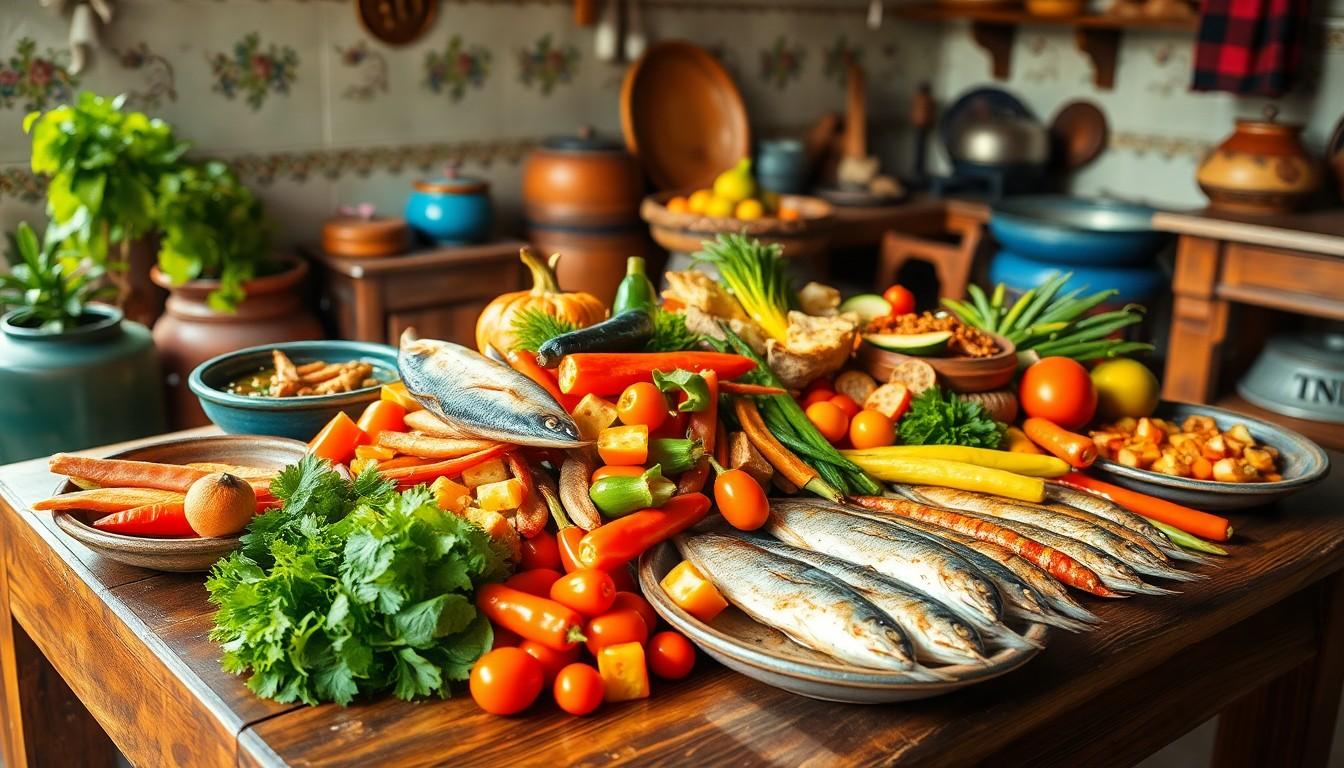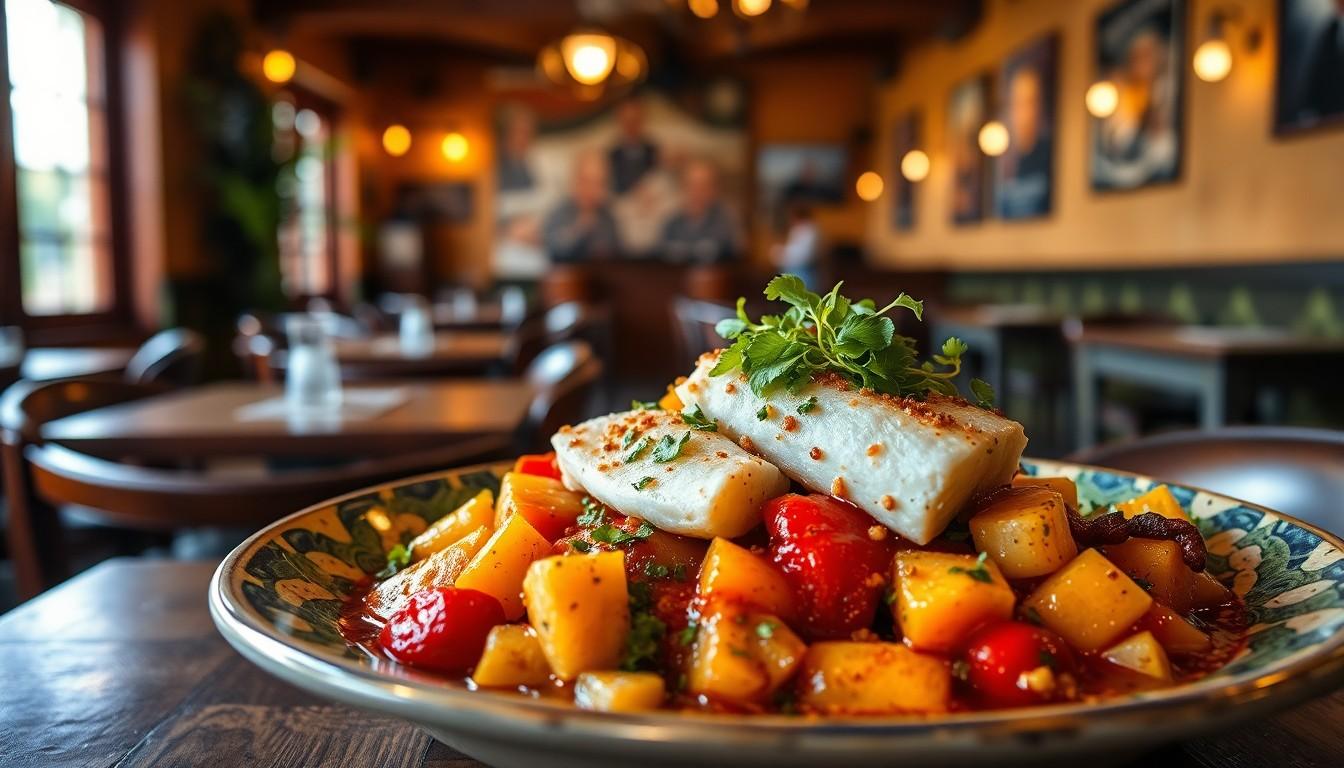Food has a way of surprising us, and nothing does it quite like the quirky world of weird food names. Take “nillobada,” for instance. This unusual dish isn’t just a mouthful to say; it’s an adventure waiting to unfold on your taste buds. Imagine sitting at a dinner table, confidently ordering something that sounds like a spell from a wizarding world, only to find it’s a delightful feast that leaves everyone intrigued.
Overview of Nillobada
Nillobada stands out as an unusual dish that captivates food enthusiasts. This unique offering originates from specific regions known for their rich culinary traditions. Typically, nillobada features a combination of ingredients that surprise diners with unexpected flavors. Diners often enjoy its vibrant presentation and enticing aroma, making it an appealing choice on any menu.
Chefs commonly prepare nillobada using ingredients such as fish, root vegetables, and aromatic spices. The dish often highlights local and seasonal produce, ensuring that each bite bursts with freshness. Many cooking methods contribute to the dish’s flavor profile, including steaming and sautéing. These techniques preserve nutrients while enhancing the overall taste.
Restaurants serving nillobada usually emphasize its cultural significance. Customers appreciate learning about the dish’s origins and the stories behind its preparation. Enthusiasts frequently share their experiences on social media, showcasing the dish’s striking appearance and inviting flavors. This engagement further adds to nillobada’s allure.
Ordering nillobada tends to feel like embarking on a culinary adventure. Diners often express excitement when their meals arrive, eager to savor the combination of flavors. Curiosity drives many to try this fascinating dish, marking a memorable experience within their dining journey.
The Origins of Nillobada

Nillobada boasts a rich and complex history that reflects both its cultural roots and culinary evolution. This dish captures the essence of regional flavors and traditions, inviting diners into a world of vibrant tastes.
Cultural Significance
Nillobada represents more than just a meal; it serves as a cultural emblem for the communities where it originated. This dish highlights local produce and traditional cooking methods, creating a deep connection to the land and its people. Festivals and community gatherings often feature nillobada as a centerpiece, fostering unity through shared culinary experiences. Celebrating this dish allows locals to preserve their heritage while teaching visitors about their unique customs.
Historical Background
The history of nillobada ties closely to the cultivation of indigenous ingredients in its region. This dish may trace its roots back centuries, when ancient cooking practices first combined regional fish and seasonal vegetables. Over time, nillobada evolved, influenced by trade routes and culinary exchanges that introduced new spices and techniques. Historical texts often reference similar preparations, indicating its longstanding presence in local gastronomy. The evolution of nillobada reflects a dynamic history intertwined with cultural adaptation and resilience.
Exploring Weird Food Names
Weird food names often reflect the rich diversity of culinary traditions around the globe. Nillobada, with its unique flavors and intriguing name, joins ranks with many other eccentric dishes.
Unique Names from Around the World
Various cultures present food names that draw curiosity and highlight local ingredients. In Italy, “spaghetti alla puttanesca” offers a playful name that hints at its straightforward preparation. Japanese cuisine features “natto,” fermented soybeans known for their strong aroma and sticky texture. Further afield, there’s “haggis” from Scotland, a savory dish boasting a truly unconventional presentation. In regions across Asia, “durian,” the infamous stinky fruit, invites mixed reactions due to its polarizing scent and taste. Such names not only evoke intrigue but also highlight cultural heritage.
The Role of Language and Food
Language significantly shapes perceptions about food, elevating even the simplest dishes. Nillobada becomes more than just a meal through its name, as it evokes curiosity and encourages exploration. Understanding local dialects often sheds light on culinary origins, enriching the dining experience. For instance, food terms in Spanish or French can convey feelings and traditions that transcend mere ingredients. Engaging in this linguistic dimension enhances the appreciation of global cuisine. Food names act as cultural markers, inviting diners to connect with traditions rooted in history.
Popular Weird Food Names Related to Nillobada
Nillobada attracts attention through its quirky name but is not the only unusual dish worth mentioning. “Spaghetti alla puttanesca,” for instance, springs from Italy and translated means “spaghetti in the style of the prostitute,” evoking curiosity about its origins. Japan’s “natto,” known for its fermented soybeans, can surprise diners with its unique texture and strong aroma. Scotland boasts “haggis,” a savory pudding made from sheep’s heart, liver, and lungs, seasoned and encased in the animal’s own stomach.
Another interesting name is “durian,” famously known as the “king of fruits” in Asia, garnering mixed reactions due to its powerful scent. “Cullen skink,” a traditional Scottish soup, combines smoked haddock, potatoes, and onions, starkly different from its sound. Belgium’s “stoofvlees” highlights beef stew cooked in beer, reflecting the country’s culinary heritage with an intriguing title.
Explorations into local dialects reveal fascinating stories behind these names, enhancing the dining experience. “Kleftiko,” a Greek dish of slow-cooked lamb, acknowledges both method and flavor. Even “poutine,” a Canadian dish of fries topped with cheese curds and gravy, invites intrigue, showcasing the region’s comfort food. Each peculiar name encourages diners to delve deeper into the cultural significance behind the dishes, enriching their appreciation for various cuisines.
Understanding the culinary landscape fosters an engaging journey through food. Connections between names and their dishes illuminate traditions passed down for generations. Curious diners often find that vibrant flavors stem from these unusual names, enriching every dining experience.
Conclusion
The allure of nillobada lies not just in its unique name but in the rich tapestry of flavors and cultural significance it embodies. Diners are drawn to its intriguing origins and the stories that accompany each dish. As they explore nillobada and other unusual food names, they embark on a journey that transcends mere dining.
These quirky names serve as gateways to understanding diverse culinary traditions and celebrating local ingredients. Each bite of nillobada offers a taste of history and community, making the dining experience not just about food but about connection and discovery. Embracing these eccentric dishes enriches one’s culinary adventure and fosters a deeper appreciation for the world’s diverse gastronomic landscape.

